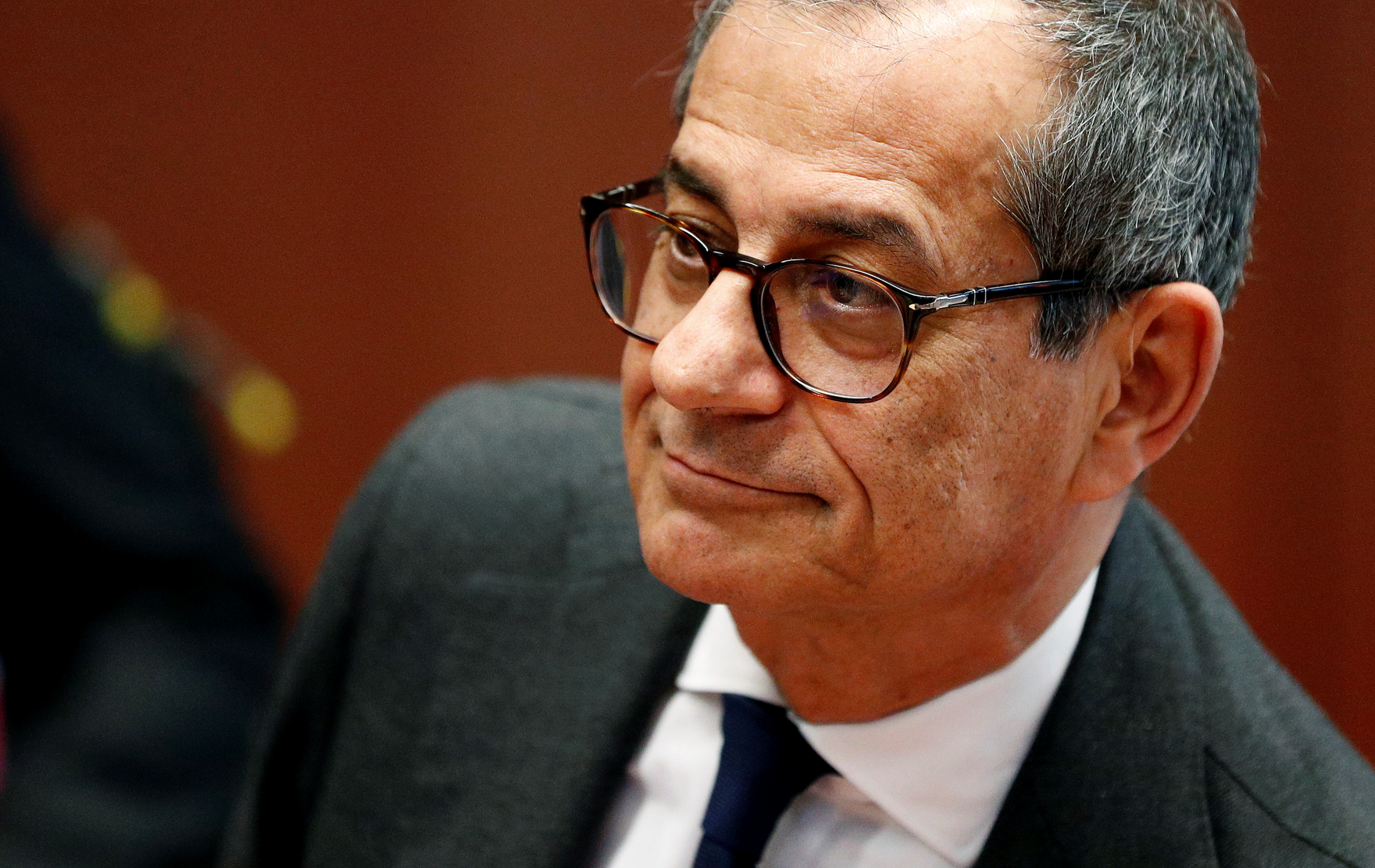Alongside co-hosts Fondazione Mario Arcelli ETS, Institutio di Studi per l’Economia Applicata (Center for Studies in Applied Economics or ISEA) and UniCredit, CIGI presented the conference “Central Bank Digital Currencies and Their Implications for the International Monetary System” In Rome, Italy, on April 4, 2023. Following the welcome and introductory remarks, panellists in two sessions led discussions about how central bank digital currencies (CBDCs) will impact monetary policy and the potential implications for the financial section sector. They posed the question “Will CBDCs be a game changer or a gatekeeper?”
At the conference’s end, Giovanni Tria, former Italian economy and finance minister and a CIGI distinguished fellow, delivered the following remarks.
These closing remarks are not intended to summarize the wide debate and contributions made by the participants in the two panels, but only to recall some topics discussed this morning, focusing more on the debate regarding the possible changes that these digital currencies can bring not only to the system of international payments but also to the future of the international monetary system and, possibly, to the future role of the dollar in this system.
Of course, these possible wider consequences will depend on the kind and characteristics of CBDCs that the various countries will eventually decide to issue, characteristics that, as already noticed, are not yet defined. On the other hand, you can only define what the CBDCs can be by defining how you want to use them.
This is because, in their essence, CBDCs could be just currencies in the standard form of being legal tender for payment and liabilities on the central bank balance sheet, and could have the same value of the national currency tender bills. So, they should be subject to the monetary policy of the issuing central bank and enjoy the stability and benefit of the trust that the issuing institutions can transfer to money.
In other words, the CBDCs, unlike both crypto-assets and stable coins, are “money,” and can play the traditional money roles of unit of account, medium of exchange and store of value.
The implications of CBDCs depend on the way central banks will use this tool and will allow their holder to use them. As already widely discussed this morning, it will make a huge difference if we have only wholesale CBDCs — that is, a tool limited to intermediaries — or retail CBDCs, or both.
At retail level, a CBDC, functioning as a credit card or other digital payment instrument, however anchored to a bank account, has the obvious potential advantage of skipping the banking system and its costs. Moreover, if it’s inserted into an efficient international CBDC system, it can reduce cross-border transaction costs. So, it can be seen as a means of including the poor and those who do not have bank accounts.
The issue is not technical, but mainly political, because it would involve having political agreements among a multiplicity of countries on the management of this platform.
The issuance of retail CBDCs can be also partly motivated as a reaction to the spread of private digital means of payment, which can create problems for financial stability or the functioning of the monetary transmission channels.
But we know that even these simple observations raise important questions (but, this morning, important questions have been raised!).
The first question, for example, concerns where the current accounts in CBDCs will be kept. If the CBDCs’ current accounts can be held directly by the central bank, we would certainly have a strong disintermediation of the banking system, with the reduction of traditional deposits and a severe impact on how the banks will fund loans. But at this point there will be also a possible change in the way in which the central banks can regulate the money supply and its multipliers. The other effect is that if CBDC deposits are directly held in the same central bank that issues the legal tender, there could be no possibility of a banking crisis caused by a “bank run.” This depends, of course, on whether CBDCs will be allowed in the future to massively crowd out traditional money.
The choices of central banks (as we discussed this morning) might be very different, and might not allow for the holding of retail deposits. Some observers, for instance, point out that there would be a problem of privacy of transactions if CBDC accounts were held at the central bank. Barry Eichengreen has recently raised this issue, describing it in the form of a trilemma. Central banks would have only two of the following three things at their disposal: digital currency, confidentiality of transactions, and financial stability.
In any case, the debate on CBDCs is also related to the theme of their possible use in cross-border payments. Because cross-border payments are not so easy and are expensive, the idea is that these new digital tools can make them faster and cheaper. This was, in fact, the first motivation for the issuance of the first private digital currency, Libra, by Facebook some years ago. Now, in principle, it seems possible, from a technical point of view, to exchange CBDCs for international payments on electronic platforms.
Yet the issue is not technical, but mainly political, because it would involve having political agreements among a multiplicity of countries on the management of this platform. Above all, the main political difficulty comes from the fact that the idea to use CBDCs in international trade could be motivated by not only the search for efficiency but also the hope that CBDCs may lead to a reduction in the role of the dollar in the international payments system, especially since the People’s Bank of China launched its digital renminbi on an experimental basis.
Actually, the substitution of the dollar as international currency in international transactions is not the Chinese motivation for the experimental launch of its national CBDC; rather, the motivation is linked to the concern of the Chinese government about the explosion of private shopping platforms and digital payment systems outside the control of the central bank.
I’d like to remind you that the theme of the role of the dollar on the international monetary system restarted before the COVID-19 crisis, essentially in connection with the escalation of the trade dispute between the United States and China, the so-called tariff war, which represented the beginning of a more general strategic and geopolitical clash. Three important factors influenced the resumption of this debate at that time.
First is the growth of China’s role in international trade compared to the previous decade.
The second factor was the use of the dollar’s dominant position in the international payment system and international financial infrastructure to pursue geopolitical objectives. This phenomenon, defined as the “weaponization” of the dollar, began to raise questions and concerns for investors regarding trust in the dollar as a safe asset.
The third factor, which was probably the main element of discontinuity with the past, was the technology that offers new and efficient solutions for the payment system, and the technical viability, even if not the political viability, of a global currency that could recall the Keynesian idea of a supranational currency.
All these factors have not lost relevance today after the pandemic crisis, especially because of the geo-economic and geopolitical consequences of the war in Ukraine. Economic sanctions against Russia have seen the involvement of payment infrastructures such as SWIFT and have enhanced the role of the dollar as a possible weapon in international relations, and there is a further push toward forms of deglobalization or fragmentation of markets that pose more complex problems than those generated by a trade war.
Finally, in the face of the current monetary policies of the major economies, uncoordinated but heavily conditioned by the choices of the Federal Reserve, it appears that Triffin’s dilemma — his critique of a system in which the international reserve currency used for international trade is represented by a national currency that is subject to a supply regulated by the domestic interests of the issuing country — is even more topical.
For this reason, the idea could be appealing that, in a new digital world, in which any national CBDC could be easily used for cross-border payments, the dollar dominance would be impaired. In fact, this conclusion does not follow.
This hypothetical digital world would require each central bank to allow non-residents to hold deposits of its own CBDC, and would require an interoperability between CBDCs supported by a complex architecture of trade regulations and agreements on exchange rates settlement. This means that, in the presence of many CBDCs, it would be a matter of setting up a system of bilateral agreements that is politically unmanageable and much more complex than the current system based on the dollar as an international currency.
Therefore, there is still skepticism about the idea that the introduction of CBDCs could change the international payment system soon and dethrone the dollar — although the changes can always be accelerated by relevant and still unpredictable geopolitical factors today.
In any case, it is not so much that the spread of CBDCs, in itself, could lead to these systemic effects in the international monetary system, but that they could be the basis of a “global digital currency” managed by the International Monetary Fund or a new specific international institution, as proposed a few years ago by the then Bank of England governor, Mark Carney. But this is precisely a political issue, not a technical issue, and a political issue still not topical.



